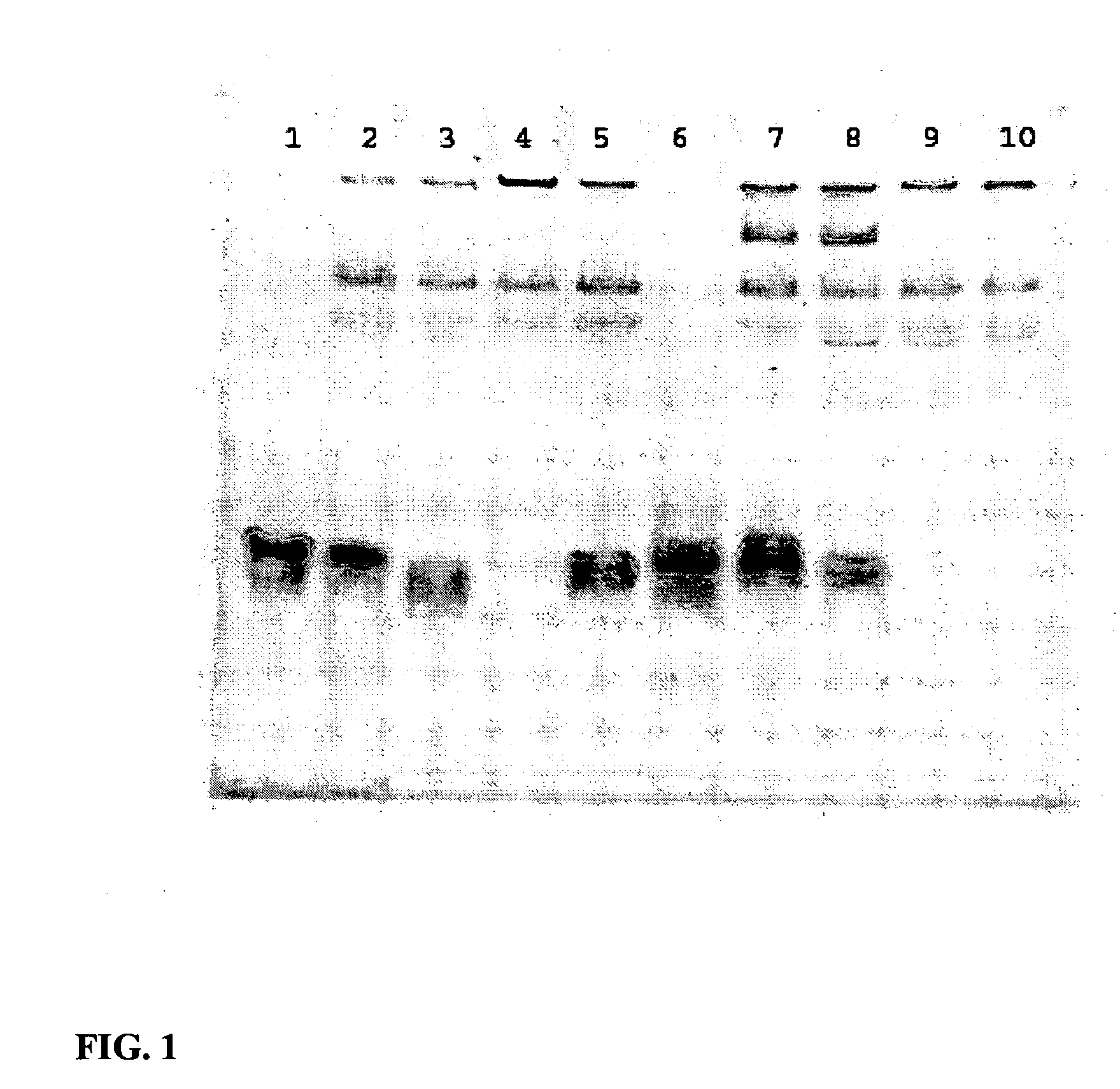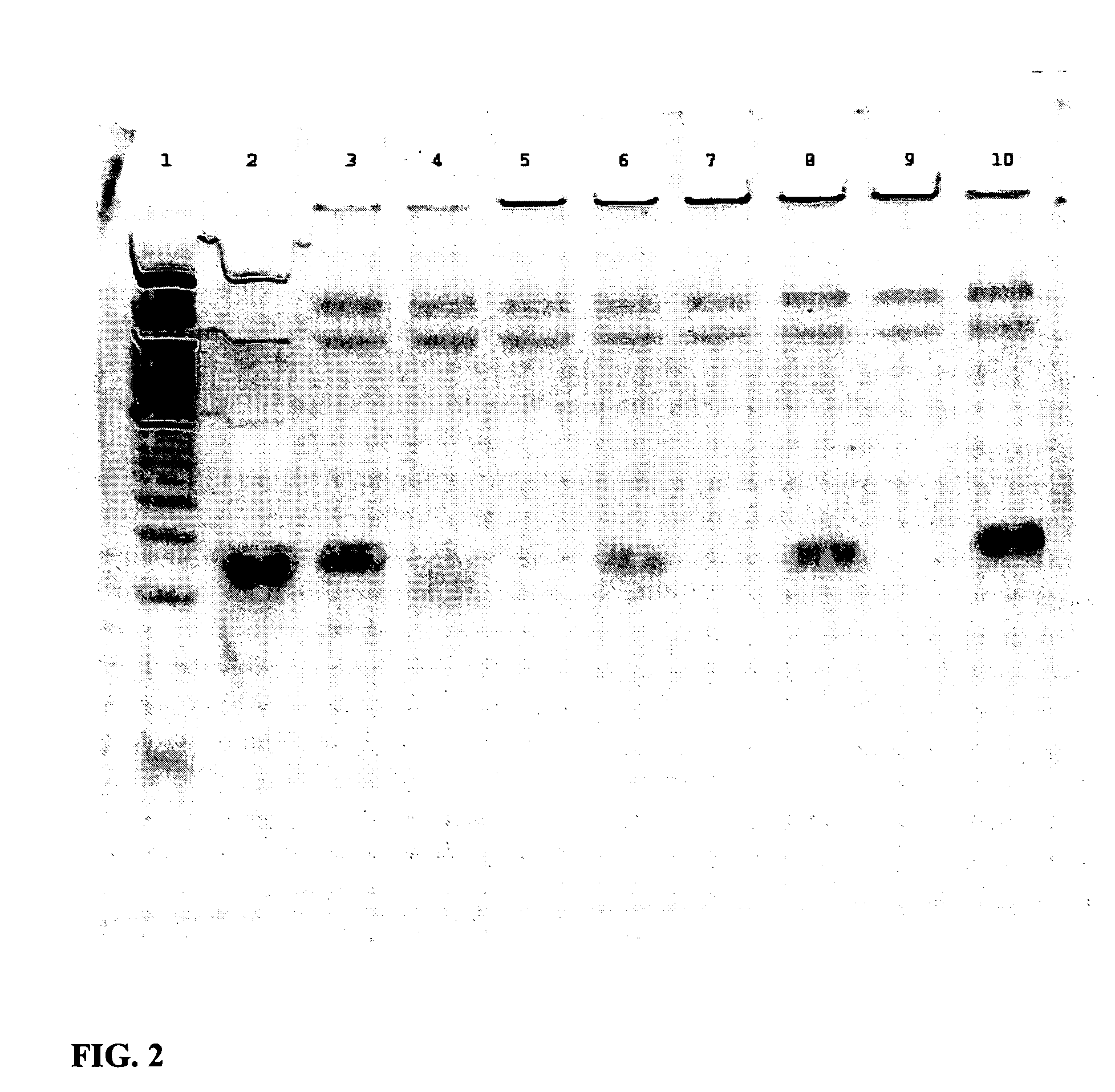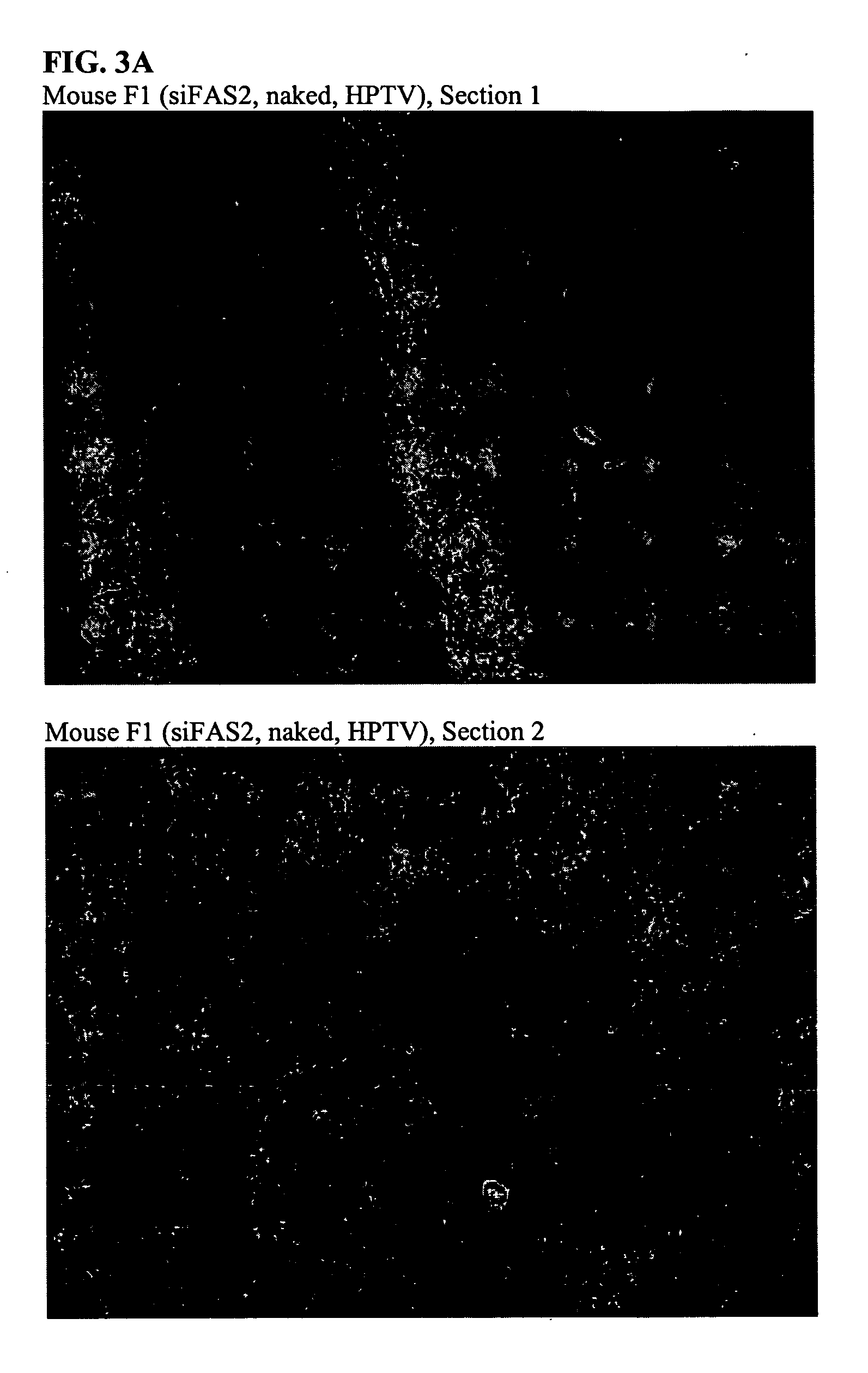Inhibitor nucleic acids
a nucleic acid and inhibitor technology, applied in the field of inhibitors, can solve the problems of affecting the behavior of a disease cell, requiring complex genetic manipulation or heavy dosage of suppressors, and often exceeding the toxicity tolerance level of the host cell
- Summary
- Abstract
- Description
- Claims
- Application Information
AI Technical Summary
Benefits of technology
Problems solved by technology
Method used
Image
Examples
example 1
Enhanced Serum Stability of Modified DNA:RNA Constructs
Materials:
Pre-formed duplexes (all from Dharmacon):
[0137] siFAS [MW 13317.2 g / mol]
5′ GUGCAAGUGCCAACCAGACTT 3′3′ TTCACGUUCACGUUUGGUGUG 5′
[0138] siFAS2 [MW 13475.1 g / mol]
5′ PGUGCAAGUGCAAACCAGACTT 3′3′ TTCACGUUCACGUUUGGUCUGP 5′[0139] where P=phosphate group
[0140] siEGFPb [MW 13323.1 g / mol]
5′ GACGUAAACGGCCACAAGUUC 3′3′ CGCUGCAUUUGCCGGUGUUCA5′
[0141] FL-pGL2 [MW 13838.55 g / mol]
5′ XCGUACGCGGAAUACUUCGATT 3′3′ TTGCAUGCGCCUUAUGAAGCU 5′[0142] where X=fluorescein
[0143] Single strands [0144] EGFPb-ss-sense (Dharmacon) [MW 6719.2 g / mol]
[0145] RNA, phosphodiester
5′ GACGUAAACGGCCACAAGUUC 3′[0146] EGFPb-ss-antisense (Dharmacon)
[0147] RNA, phosphodiester
5′ ACUUGUGGCCGUUUACGUCGC 3′[0148] JH-1 (Caltech Oligo Synthesis Facility)
[0149] DNA, phosphorothioate
5′ GACGTAAACGGCCACAAGTTCX 3′[0150] where X=TAMRA [0151] jhDNAs-1 (Caltech Oligo Synthesis Facility)
[0152] DNA, phosphodiester
5′ GACGTAAACGGCCACAAGTTC 3′[0153]...
example 2
Improved In Vivo Uptake of DNA:RNA Constructs
[0159] Each of four mice were injected with 2.5 mg / kg duplex via HPTV as indicated below:
IDDuplexF1siFAS2 (unlabeled), nakedG1FL-pGL2 (5′ fluorescein), nakedM1JH-1:EGFPb-anti (3′ TAMRA), nakedN1JH-1:EGFPb-anti (3′ TAMRA), CDP-Imid, 20:80 AdPEGLac:AdPEG
24 h post-injection, mice were sacrificed and livers were harvested, immersed in O.C.T. cryopreservation compound, and stored at −80° C. Morgan (Triche lab) kindly prepared thin sections (no fixative or counterstain added) which were examined immediately by confocal microscopy.
[0160] At 24 hours post injection, there is no fluorescence in the liver from injection of either F1 and G1 while significant fluorescence is observed in the liver from injections with M1. See FIG. 3A-3D.
PUM
| Property | Measurement | Unit |
|---|---|---|
| logP | aaaaa | aaaaa |
| logP | aaaaa | aaaaa |
| logP | aaaaa | aaaaa |
Abstract
Description
Claims
Application Information
 Login to View More
Login to View More - R&D
- Intellectual Property
- Life Sciences
- Materials
- Tech Scout
- Unparalleled Data Quality
- Higher Quality Content
- 60% Fewer Hallucinations
Browse by: Latest US Patents, China's latest patents, Technical Efficacy Thesaurus, Application Domain, Technology Topic, Popular Technical Reports.
© 2025 PatSnap. All rights reserved.Legal|Privacy policy|Modern Slavery Act Transparency Statement|Sitemap|About US| Contact US: help@patsnap.com



